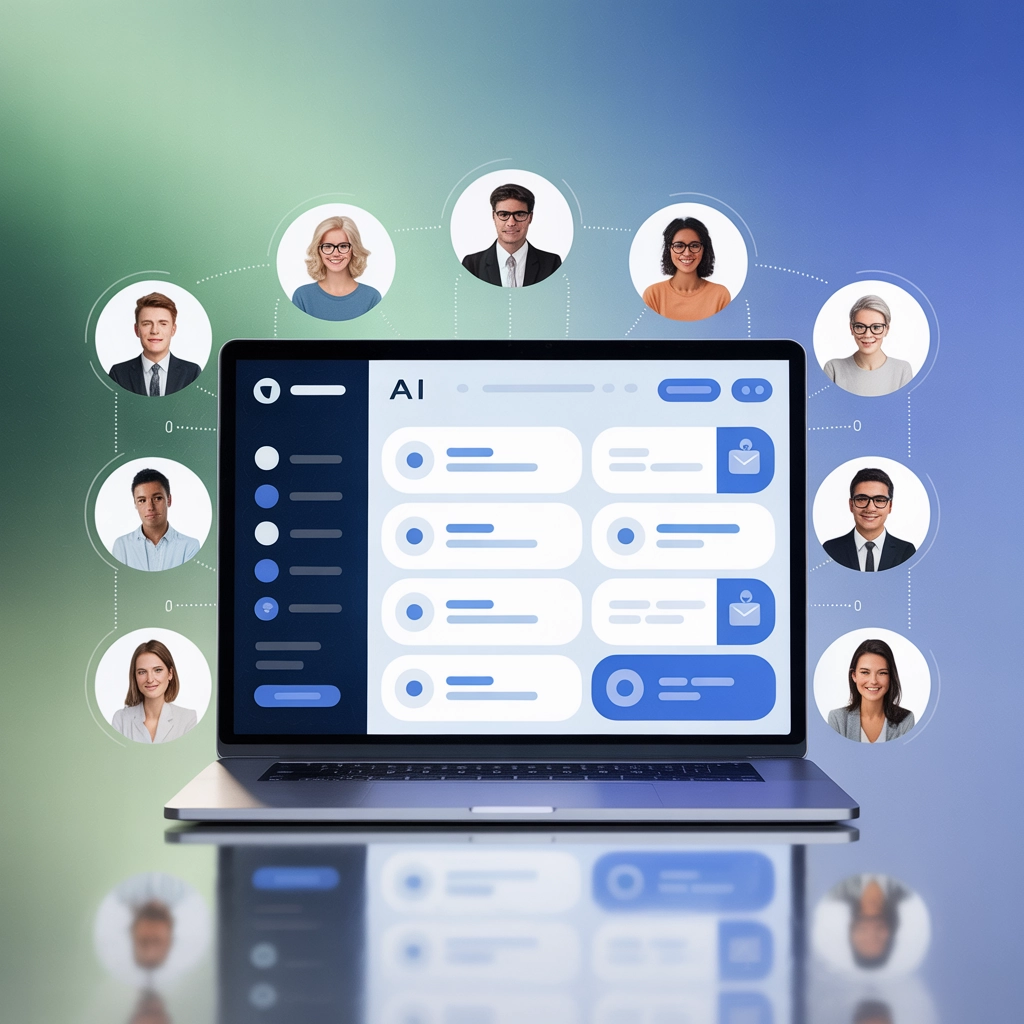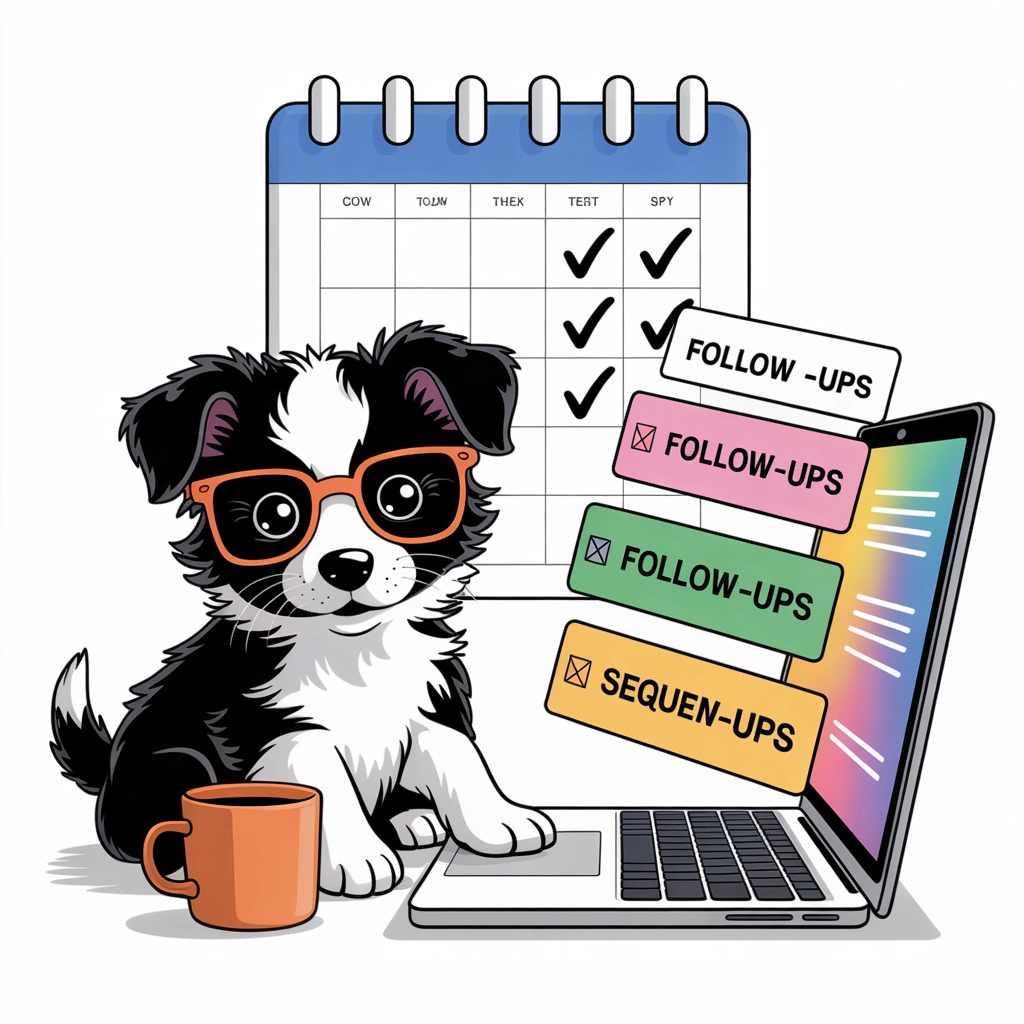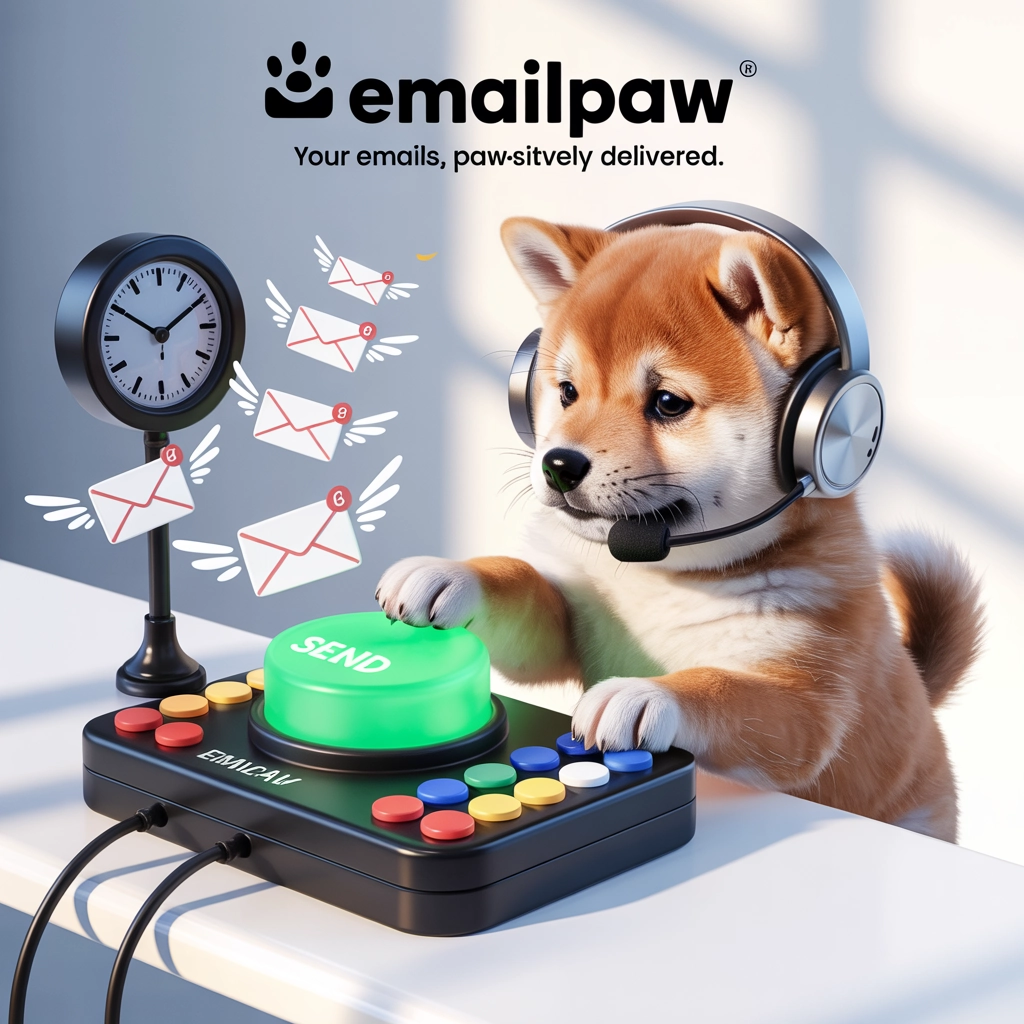How to Automate Client Follow-Ups with AI (No Tech Experience Needed)
Discover how to set up AI-powered client follow-up systems without writing a single line of code. Save time, boost response rates, and never let potential deals slip through the cracks again.

 🐾
🐾How to Automate Client Follow-Ups with AI (No Tech Experience Needed)

Let's face it—you didn't start your business to spend hours each day writing follow-up emails. Yet here you are, manually tracking who needs a nudge and crafting the same types of messages over and over again.
What if you could set up a system that automatically follows up with prospects and clients at the perfect time, with personalized messages that sound like you wrote them yourself—all while you focus on the work you actually enjoy?
Good news: in 2025, you absolutely can, and you don't need a computer science degree to make it happen.
Why Manual Follow-Ups Are Killing Your Business
Before we dive into the solution, let's talk about the problem. Manual follow-ups are:
- Time-consuming: The average small business owner spends 20+ hours monthly on follow-ups
- Inconsistent: When you're busy, follow-ups are the first thing to slip
- Error-prone: It's easy to forget who needs follow-up and when
- Hard to scale: As your client base grows, manual follow-ups become impossible
The result? Research shows businesses lose 75% of potential sales simply because they didn't follow up at the right time or in the right way.
What AI Follow-Up Automation Can Do For You
Modern AI tools can now:
- Track when follow-ups are needed based on client behavior
- Write personalized messages that match your tone and style
- Send communications at optimal times for maximum response
- Adapt based on how clients respond (or don't respond)
- Work across multiple channels (email, SMS, social media)
Best of all, setting up these systems requires zero coding knowledge—just the ability to follow simple, visual instructions.

Step-by-Step Guide to Setting Up Your First AI Follow-Up System
Let's walk through how to create your first automated follow-up sequence:
Step 1: Choose Your AI Follow-Up Tool
For beginners, we recommend these user-friendly platforms:
- Kuno by Tailforce: An AI assistant specifically designed for client communications and follow-ups
- Zapier: Connect your existing tools and automate workflows between them
- Make (formerly Integromat): Similar to Zapier but with more flexible workflows
- HubSpot: CRM with built-in automation capabilities
Step 2: Map Out Your Follow-Up Sequence
Before building anything, plan your sequence:
- Identify trigger points: What events should initiate follow-ups? Examples:
- Client views your proposal but doesn't respond within 48 hours
- A prospect completes a discovery call but doesn't book the next step
- Customer purchase is completed (perfect time for a thank-you and referral request)
- Determine timing: How many follow-ups and when?
- First follow-up: 2-3 days after initial contact
- Second follow-up: 4-5 days after first follow-up
- Final follow-up: 7 days after second follow-up
- Draft message templates: Create template messages for each stage, leaving placeholders for personalization
Step 3: Set Up Your Automation
Let's use Kuno by Tailforce as our example:
- Connect your email: Authorize Kuno to access your email account
- Create a new automation: Select "New Follow-Up Sequence" from the dashboard
- Define your trigger: Choose "After sending proposal" from the dropdown menu
- Set your conditions: "If no response within 48 hours"
- Build your sequence:
- Add first follow-up (2 days after trigger)
- Add second follow-up (7 days after trigger if still no response)
- Add final follow-up (14 days after trigger if still no response)
Step 4: Craft AI-Generated Follow-Up Messages
This is where AI shines. Instead of writing each message from scratch:
- Train the AI on your voice: Upload previous emails or content you've written
- Use the message builder: Tell the AI what the follow-up should accomplish
- Review and refine: Edit the AI's suggestions until they sound perfect
For example, in Kuno, you can say: "Write a friendly follow-up asking if they received my proposal. Mention that I'm available to answer questions and suggest a quick call."
The AI will generate a natural-sounding message based on your instructions and previous writing style.

Step 5: Add Smart Personalization
Basic personalization (adding names) isn't enough anymore. Modern AI tools allow for:
- Contextual references: Mentioning specific details from previous conversations
- Behavioral personalization: Changing the message based on how they've interacted with your previous communications
- Timing optimization: Sending messages when a particular client is most likely to respond
For example, in your Kuno settings, enable "Smart Personalization" and the AI will automatically include references to your last interaction and adjust message tone based on the client's communication style.
Step 6: Test Your Sequence
Before going live:
- Send test emails to yourself: Make sure everything works as expected
- Check all scenarios: What happens if they respond after the first follow-up? Does the sequence stop correctly?
- Review on mobile: How do your messages look on different devices?
Best Practices for AI Follow-Up Success
1. Don't Over-Automate
Automation works best for initial follow-ups and routine communications. For high-value prospects or complex situations, use AI to remind you to follow up personally.
2. Maintain a Human Touch
Always make your automated messages sound conversational and authentic. Avoid robotic language like "This is an automated follow-up."
3. Create Segment-Specific Sequences
Different client types need different approaches:
- New prospects: Educational content, gentle nudges
- Existing clients: Check-ins, upsell opportunities
- Past clients: Re-engagement, referral requests
4. Monitor and Improve
Every month:
- Check your response rates
- A/B test different message styles
- Review any negative feedback
- Update your sequences based on what's working

Real-World Success Story: Sarah's Design Studio
Sarah, a graphic designer, implemented an AI follow-up system using Kuno by Tailforce. Her results after 90 days:
- Time saved: 15+ hours per month
- Response rate: Increased from 23% to 68%
- Conversion rate: Improved by 34%
- Client feedback: Multiple clients commented on her "impressive follow-up"
The best part? Sarah spent just 2 hours setting up the entire system.
Getting Started Today
Ready to automate your follow-ups? Here's your action plan:
- Choose your tool: We recommend starting with Kuno by Tailforce for its ease of use and AI capabilities
- Start small: Automate one follow-up sequence first (like proposal follow-ups)
- Expand gradually: Once comfortable, add more sequences for different scenarios
Conclusion: The Follow-Up Advantage
In today's competitive business landscape, consistent, personalized follow-up gives you a massive advantage. With AI automation, you can deliver perfect follow-ups every time—without the time investment.
The best part? As you sleep, your AI assistant is making sure no opportunity slips through the cracks. That means more closed deals, happier clients, and fewer late nights wondering if you remembered to send that important email.
Ready to transform your follow-up game? Start your free Tailforce trial today and see what AI-powered follow-ups can do for your business.
 🐾
🐾